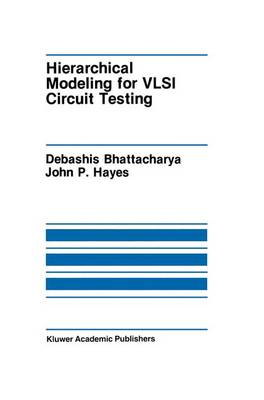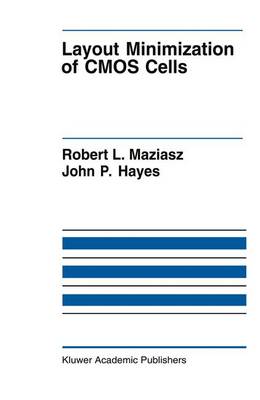The Springer International Series in Engineering and Computer Science
2 primary works
Book 89
Hierarchical Modeling for VLSI Circuit Testing
by Debashis Bhattacharya and John P. Hayes
Published 31 December 1989
Test generation is one of the most difficult tasks facing the designer of complex VLSI-based digital systems. Much of this difficulty is attributable to the almost universal use in testing of low, gate-level circuit and fault models that predate integrated circuit technology. It is long been recognized that the testing prob lem can be alleviated by the use of higher-level methods in which multigate modules or cells are the primitive components in test generation; however, the development of such methods has proceeded very slowly. To be acceptable, high-level approaches should be applicable to most types of digital circuits, and should provide fault coverage comparable to that of traditional, low-level methods. The fault coverage problem has, perhaps, been the most intractable, due to continued reliance in the testing industry on the single stuck-line (SSL) fault model, which is tightly bound to the gate level of abstraction. This monograph presents a novel approach to solving the foregoing problem. It is based on the systematic use of multibit vectors rather than single bits to represent logic signals, including fault signals. A circuit is viewed as a collection of high-level components such as adders, multiplexers, and registers, interconnected by n-bit buses. To match this high-level circuit model, we introduce a high-level bus fault that, in effect, replaces a large number of SSL faults and allows them to be tested in parallel. However, by reducing the bus size from n to one, we can obtain the traditional gate-level circuit and models.
Book 160
The layout of an integrated circuit (lC) is the process of assigning geometric shape, size and position to the components (transistors and connections) used in its fabrication. Since the number of components in modem ICs is enormous, computer aided-design (CAD) programs are required to automate the difficult layout process. Prior CAD methods are inexact or limited in scope, and produce layouts whose area, and consequently manufacturing costs, are larger than necessary. This book addresses the problem of minimizing exactly the layout area of an important class of basic IC structures called CMOS cells. First, we precisely define the possible goals in area minimization for such cells, namely width and height minimization, with allowance for area-reducing reordering of transistors. We reformulate the layout problem in terms of a graph model and develop new graph-theoretic concepts that completely characterize the fundamental area minimization problems for series-parallel and nonseries-parallel circuits. These concepts lead to practical algorithms that solve all the basic layout minimization problems exactly, both for a single cell and for a one-dimensional array of such cells. Although a few of these layout problems have been solved or partially solved previously, we present here the first complete solutions to all the problems of interest.

